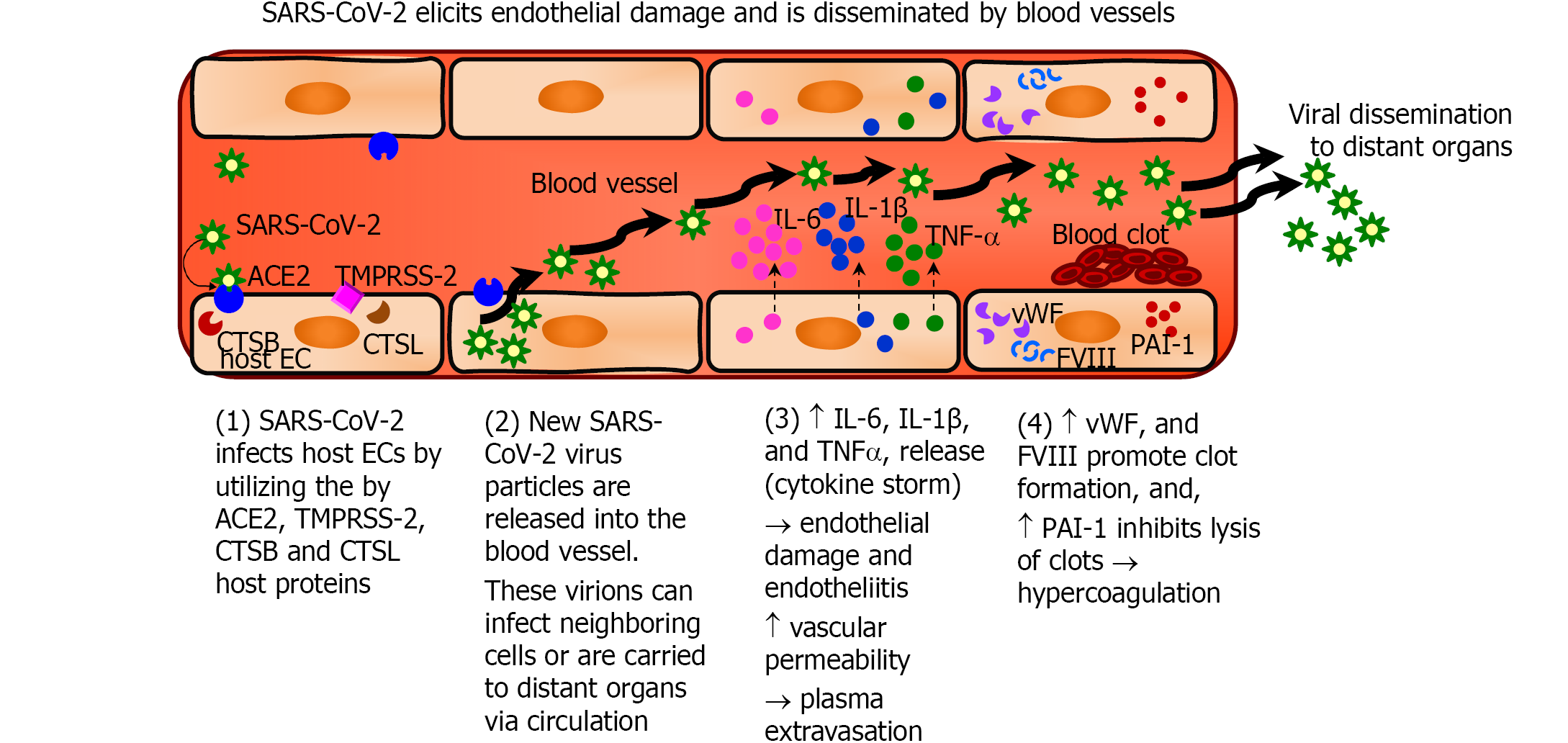Copyright
©The Author(s) 2022.
World J Gastroenterol. Jan 21, 2022; 28(3): 275-289
Published online Jan 21, 2022. doi: 10.3748/wjg.v28.i3.275
Published online Jan 21, 2022. doi: 10.3748/wjg.v28.i3.275
Figure 3 Sequential steps of SARS-CoV-2 infection of endothelial cells and endothelial damage.
SARS-CoV-2 infects endothelial cells (ECs) using the host angiotensin-converting enzyme 2 receptors and cellular proteases (transmembrane serine protease 2, and cathepsin B and L). The virus then replicates within the cells and is released into the blood vessels, which then disseminate the virus to distant organs. Severe COVID-19 results in a cytokine storm wherein there is increased production of pro-inflammatory cytokines such as interleukin-6 (IL-6), IL-1, interleukin-1 β (IL-1 β) and tumor necrosis factor-α (TNF-α), and results in endothelial damage and endotheliitis, and demonstrated increased vascular permeability that cause plasma extravasation. Activated ECs produce increased amounts of vWF and factor VIII, and PAI-1, which induce a pro-coagulant, hypofibrinolytic state. SARS-CoV-2: Severe acute respiratory syndrome coronavirus 2; ECs: Endothelial cells; ACE2: Angiotensin-converting enzyme 2; TMPRSS-2: Transmembrane serine protease 2; CTSB: Cathepsin B; CTSL: Cathepsin L; IL: Interleukin; TNF-α: Tumor necrosis factor-α.
- Citation: Tarnawski AS, Ahluwalia A. Endothelial cells and blood vessels are major targets for COVID-19-induced tissue injury and spreading to various organs. World J Gastroenterol 2022; 28(3): 275-289
- URL: https://www.wjgnet.com/1007-9327/full/v28/i3/275.htm
- DOI: https://dx.doi.org/10.3748/wjg.v28.i3.275









